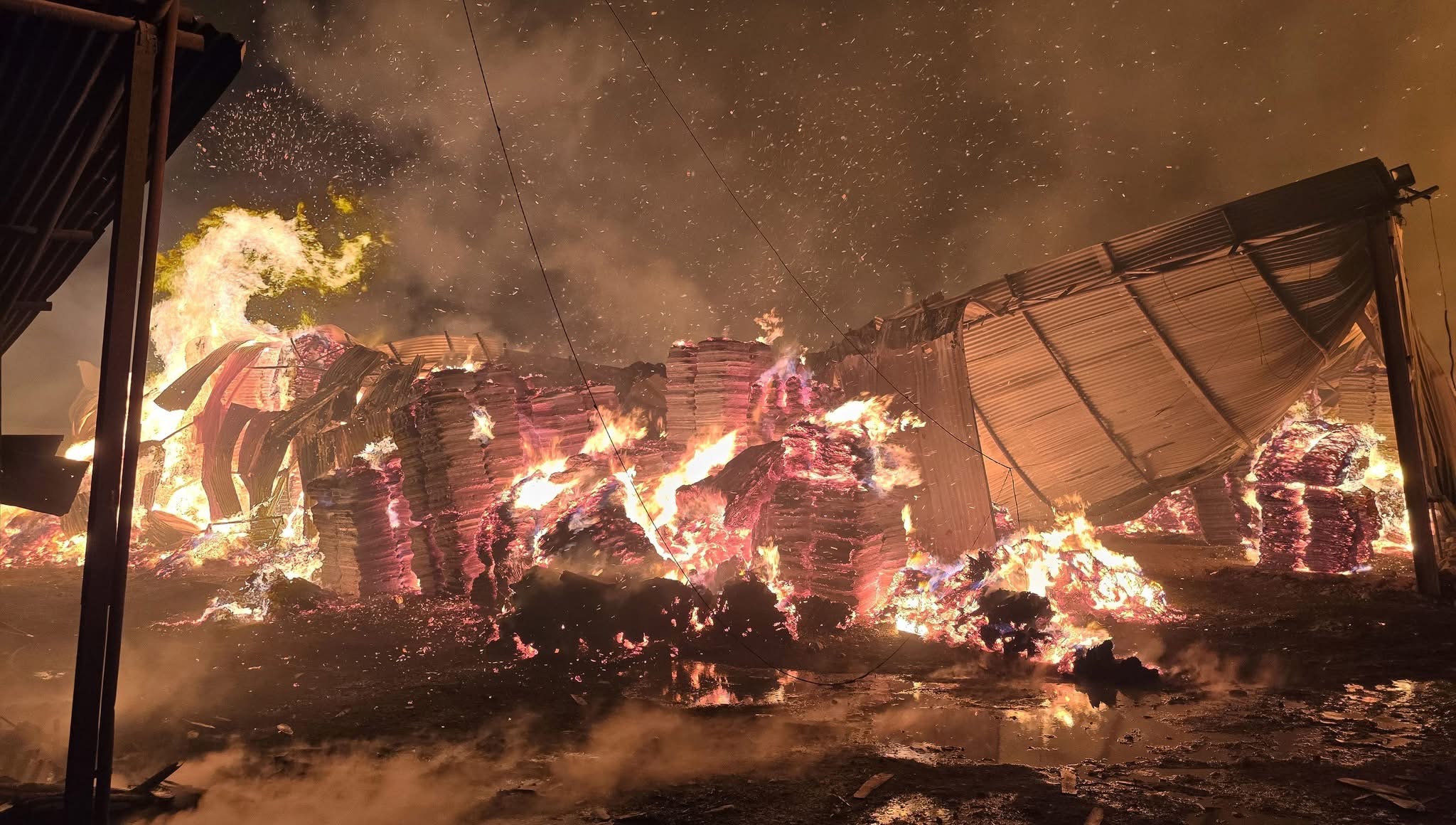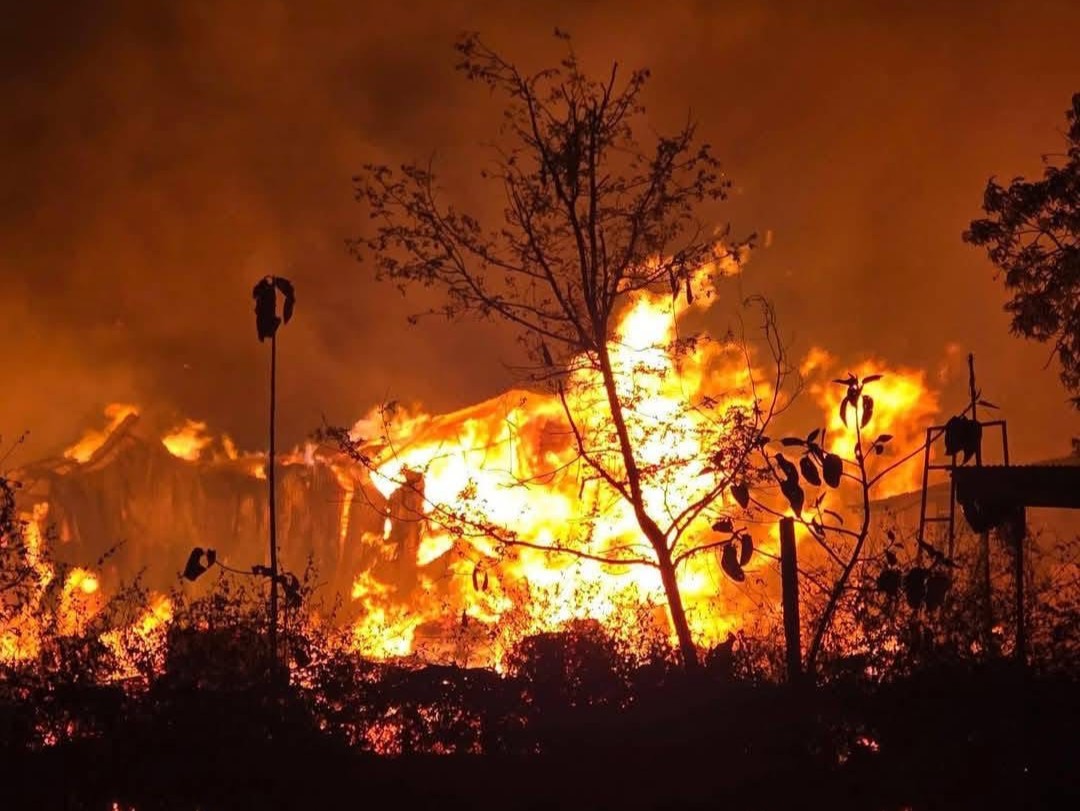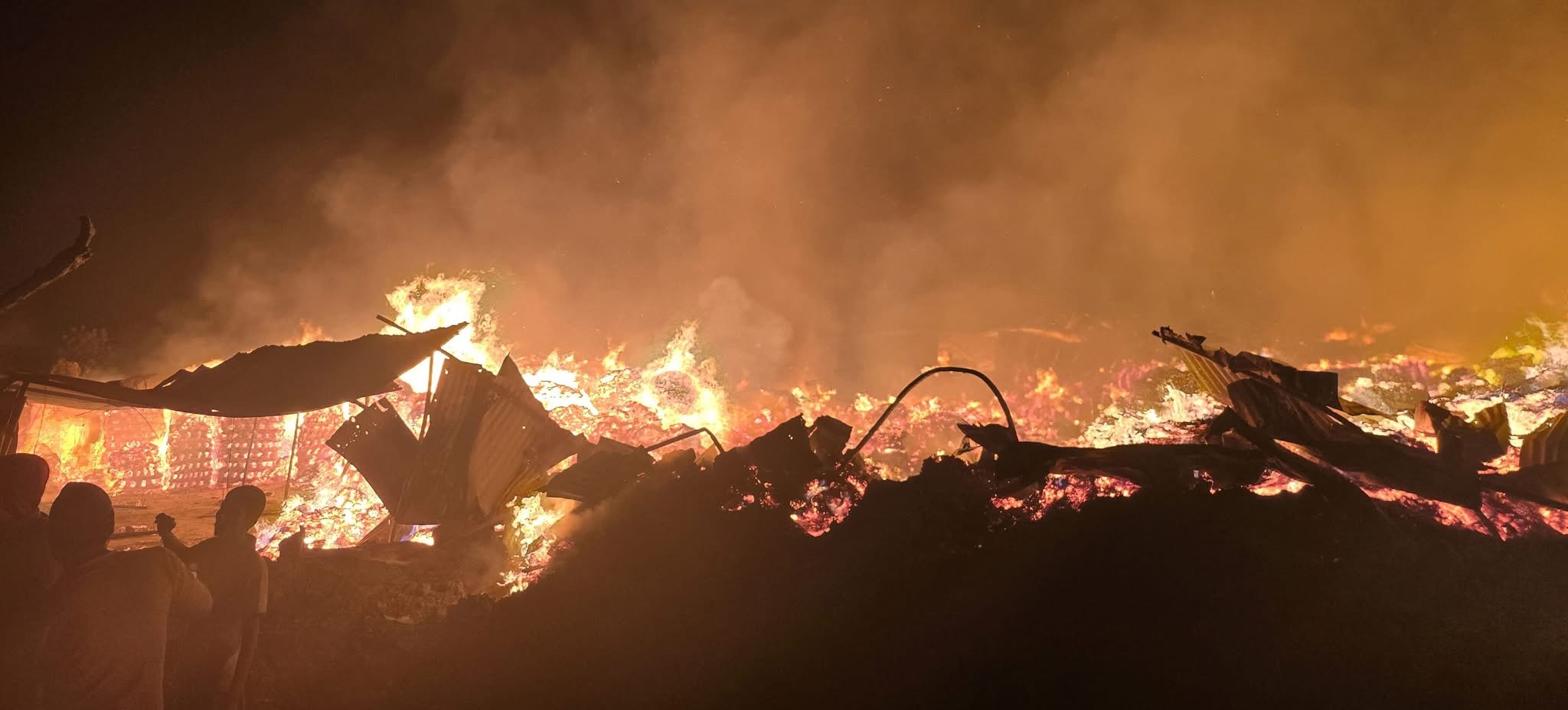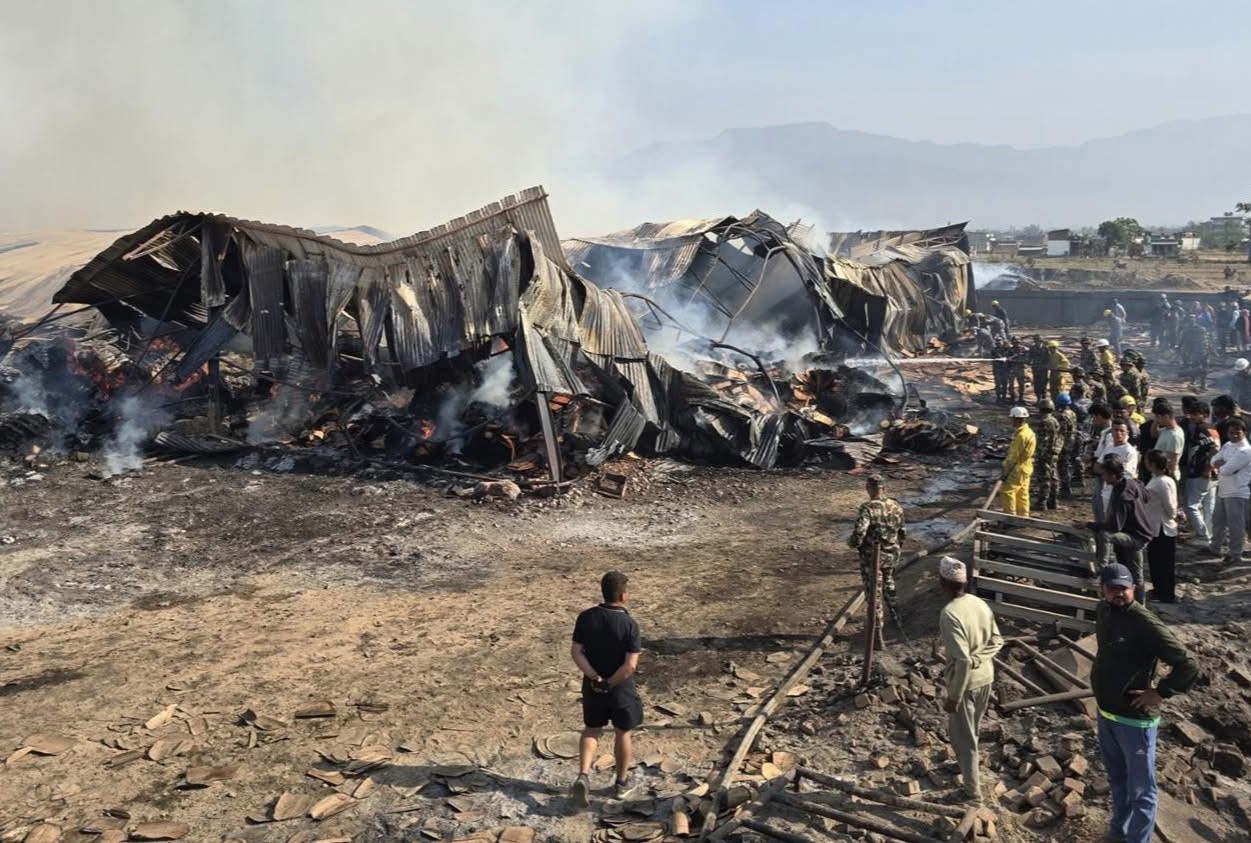In the quiet hours of March 24, 2025, a devastating fire erupted at the Shangrila Plywood Industry in Khaira, Ghorahi Sub-Metropolitan City-9, Dang, Nepal. This catastrophic event not only obliterated a significant industrial establishment but also sent shockwaves through the local community, highlighting vulnerabilities in industrial safety and emergency preparedness.

Details of the Fire
The blaze ignited around 2:00 a.m., swiftly consuming the factory's extensive premises. Preliminary investigations suggest that an electrical short circuit may have been the catalyst for the inferno. The rapid spread of the fire caught many off guard, necessitating immediate and coordinated response efforts.

Firefighting Efforts
Local firefighting units from Ghorahi, Tulsipur, and Lamahi were promptly dispatched to the scene. However, the intensity of the fire overwhelmed these initial efforts, leading authorities to seek assistance from neighboring districts, including Banke, Bardiya, Kapilvastu, and Rupandehi. Fire engines and water tankers from these areas converged on the site, with personnel from the Nepal Army, Nepal Police, Armed Police Force, and local residents collaborating tirelessly to contain the flames. Despite their relentless efforts, the fire remained uncontained for several hours, posing significant challenges to the responders.
Impact on the Industry
The Shangrila Plywood Industry, sprawling over approximately eight bighas of land, suffered extensive damage. The inferno devoured vast quantities of raw materials, finished products, and specialized machinery essential for plywood manufacturing. This destruction represents a substantial economic setback, not only for the factory owners but also for the local economy that heavily relied on its operations.

Threat to Nearby Communities
The factory's proximity to residential areas exacerbated the crisis. With over 30 homes at immediate risk, authorities prioritized the evacuation of residents to safer locations. Efforts were also directed towards salvaging personal belongings from threatened households, underscoring the fire's potential to escalate into a broader community disaster.
Role of Emergency Services
The emergency response showcased a commendable level of coordination among various agencies. Firefighters, security forces, and local volunteers worked in unison, deploying all available resources to tackle the blaze. Their collective efforts, although hampered by the fire's ferocity, played a crucial role in preventing a more widespread catastrophe.
Community Response
In the face of adversity, the local community demonstrated remarkable solidarity. Residents assisted in evacuation efforts, provided shelter to displaced families, and supported emergency personnel. This communal resilience not only alleviated immediate hardships but also reinforced the social fabric during a time of crisis.
Environmental Concerns
The combustion of large quantities of wood and industrial materials raised environmental alarms. Potential air and soil contamination became pressing concerns, prompting authorities to consider measures to mitigate environmental damage. Addressing these issues is vital to prevent long-term ecological repercussions in the region.
Government Involvement
Local authorities, including Chief District Officer Krishna Prasad Lamsal, were actively involved in managing the crisis. The government's swift mobilization of resources and support underscored its commitment to public safety and industrial oversight. This incident may prompt a reevaluation of policies related to industrial safety standards and emergency response protocols.
Economic Repercussions
The destruction of the Shangrila Plywood Industry has far-reaching economic implications. The immediate loss of employment for factory workers threatens the livelihoods of numerous families. Additionally, the halt in production disrupts the supply chain, affecting related businesses and the regional economy. Strategic planning and support will be essential to facilitate economic recovery and assist those affected.
Safety Regulations and Compliance
This incident casts a spotlight on the existing safety protocols within industrial establishments. Questions regarding the compliance of the Shangrila Plywood Industry with mandated safety standards have emerged. A thorough investigation could reveal lapses and emphasize the necessity for stringent enforcement of safety regulations to prevent future tragedies.
Lessons Learned
The fire serves as a stark reminder of the critical importance of robust safety measures and emergency preparedness. Identifying gaps in current protocols and implementing corrective actions are imperative steps. The incident highlights the need for regular safety audits, employee training, and investment in fire prevention infrastructure.
Rebuilding and Recovery
Looking ahead, plans to rebuild the factory will require careful consideration. Supporting displaced workers through financial aid and employment opportunities is crucial to mitigate the disaster's social impact. Establishing a realistic timeline for reconstruction and resumption of operations will be vital for the community's morale and economic stability.
Community Support and Solidarity
Non-governmental organizations and community groups have a pivotal role in the recovery process. Initiatives such as fundraising, providing temporary housing, and offering










